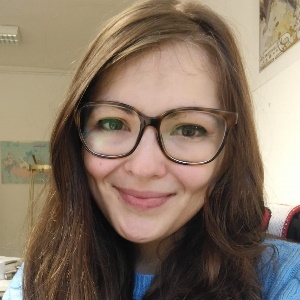B05
(Limits of) variability in speech planning
PI(s): Prof. Dr. Audrey Bürki-Foschini
An important challenge for contemporary psycholinguistic research is to understand the processes by which speakers combine words with one another to produce utterances. A central issue in this endeavour concerns the scope of advanced planning, that is, how many words of an utterance speakers prepare before initiating the articulation of that utterance. Several authors suggest that the scope of advanced planning is variable – or flexible. The aim of this project is to determine the functions and extent of this variability and the constraints that operate to limit this variability. We hypothesize (1) that available cognitive resources play a major role in determining the scope of advanced planning for a given utterance, (2) that older speakers experience more difficulty under limited resources, and (3) that speakers can adjust the execution of articulatory gestures to maintain fluency under different planning scopes.
in phase 1:
Variability and its limits in the time course of language production processes
PI(s): Prof. Dr. Audrey Bürki-Foschini
The aim of this project is to refine current psycholinguistic models of word production by integrating precise information about the dynamics of encoding processes, about the constraints that operate to limit the variability of these processes (i.e. speaker-specific variables and contextual factors) and about how the linguistic system interacts with other cognitive functions during actual speech production.
The results of our experiments so far highlight the role of sustained attention, both to explain inter-individual and intra-individual differences in naming performance. We further find that a large part of the observed inter-individual variability in the time required to prepare a vocal response originates in late encoding processes, i.e., the preparation of motor gestures (Bürki, submitted; Madec, Elbuy, Lorenz, & Bürki, in preparation). On-going experiments examine the role of age and task difficulty in speech production.
In the course of the project, we also addressed important methodological issues pertaining to the study of word production processes. First, we showed that inter-individual differences in the time required to prepare a vocal response impact the Electrophysiological signal, and render the estimation of the time course of events rather imprecise (Madec et al., in preparation). Second, we performed a series of meta-analyses of data collected with the picture-word interference paradigm, one of the most used paradigm in the field. Our work shows that the available evidence to date does not warrant strong conclusions about the functional origin of semantic interference effects (often used to index lexical access in previous studies, Bürki Elbuy, Madec, & Vasishth, 2020) and highlights the role of the properties of the experimental materials in interference effects (Bürki, Alario, & Vasishth, in preparation).
Members
 Prof. Dr. Audrey Bürki-Foschini
Prof. Dr. Audrey Bürki-FoschiniPublications
Types of Publications
- Peer-Reviewed: Papers, Journals, Books, Articles of the CRC
- Talk or Presentation: Talks, Presentations, Posters of the CRC
- SFB-Related: not produced in connection with the CRC, but are thematically appropriate
- Other: Papers, Journals, Books, Articles of the CRC, but not peer-reviewed
| Author(s) | Title | Year | Published in | Type | Links |
|---|---|---|---|---|---|
| Bürki, A., Besana, T., Degiorgi, G., Gilbert, R., & Alario, F.-X. | Representation and selection of determiners with phonological variants. | 2019 | Journal of Experimental Psychology: Learning, Memory, and Cognition, 45(7), 1287-1315. DOI: 10.1037/xlm0000643 | Peer-Reviewed | |
| Bürki, A. | Variation in the speech signal as a window into the cognitive architecture of language production. | 2018 | Psychonomic Bulletin & Review, 25(6), 1973-2004. DOI: 10.3758/s13423-017-1423-4 | Peer-Reviewed | |
| Bürki, A., Viebahn, M., & Gafos, A. I. | Plasticity and transfer in the sound system: exposure to syllables in production or perception changes their subsequent production. | 2020 | Language, Cognition and Neuroscience, 35(10), 1371-1393. DOI: 10.1080/23273798.2020.1782445 | Peer-Reviewed | |
| Bürki, A., Elbuy, S., Madec, S., & Vasishth, S. | What did we learn from forty years of research on semantic interference? A Bayesian meta-analysis. | 2020 | Journal of Memory and Language, 114: 104125. DOI: 10.1016/j.jml.2020.104125 | Peer-Reviewed | |
| Bürki, A. | On the cognitive architecture of the language production system: The neglected role of usage. | 2020 | Invited talk at the Lecture series Cognitive Science, Institute of Psychology, Humboldt-Universität zu Berlin, Berlin, Germany. | Talk or Presentation | |
| Bürki, A. | On the cognitive architecture of the language production system: The neglected role of syntagmatic and paradigmatic relationships. | 2020 | Invited seminar at the Heinrich-Heine-Universität Düsseldorf, Düsseldorf, Germany. | Talk or Presentation | |
| Bürki, A., Elbuy, S., Madec, S., & Vasishth, S. | What did we learn from forty years of research on semantic interference? A Bayesian meta-analysis. | 2020 | Poster presented at the 26th Architectures and Mechanisms of Language Processing (AMLaP 2020), University of Potsdam, Potsdam, Germany. 03 - 05 September. | Talk or Presentation | |
| Ciaccio, L. A., Bürki, A., & Clahsen, H. | Identifying individual profiles in the processing of morphological violations. An ERP study on German regular and irregular plural forms. | 2020 | Poster presented at the 12th Annual Meeting of the Society for the Neurobiology of Language (virtual edition). 21-25 Oct. | Talk or Presentation | |
| Madec, S., Elbuy, S., Villinger, T., Lorenz, A., & Bürki, A. | Semantic interference and phonological facilitation in picture-word interference. | 2019 | Poster presented at the 21st Conference of the European Society for Cognitive Psychology (ESCoP 2019), Tenerife, Spain. 25 - 28 September. | Talk or Presentation | |
| Welby, P., Spinelli, E., Sadat, J., & Bürki, A. | Variability and orthography in learning new words. | 2019 | Poster presented at the 21st Conference of the European Society for Cognitive Psychology (ESCoP 2019) Tenerife, Spain. 25 - 28 September. | Talk or Presentation | |
| Welby, P., Spinelli, E., & Bürki, A. | Spelling provides a precise (but sometimes misplaced) phonological target. Orthography and acoustic variability in second language word learning. | 2022 | Journal of Phonetics, 94, 101172 DOI: 10.1016/j.wocn.2022.101172 | Peer-Reviewed | |
| Bürki-Foschini, A., Alario, X., & Vasishth, S. | When words collide: Bayesian meta-analyses of distractor and target properties in the picture-word interference paradigm. | 2022 | Quarterly Journal of Experimental Psychology. DOI: 10.1177/17470218221114644 | Peer-Reviewed | |
| Bürki, A., & Madec, S. | Picture-word interference in language production studies: Exploring the roles of attention and processing times. | 2022 | Journal of Experimental Psychology: Learning, Memory & Cognition, 48(7), 1019-1046. DOI: 10.1037/xlm0001098 | Peer-Reviewed | |
| Fuhrmeister, P., Madec, S., Lorenz, A., Elbuy, S., & Bürki, A. | Behavioral and EEG evidence for inter-individual variability in late encoding stages of word production. | 2022 | Language, Cognition and Neuroscience DOI: 10.1080/23273798.2022.2030483 | Peer-Reviewed | |
| Fuhrmeister, P., & Bürki, A. | Distributional properties of semantic interference in picture naming: Bayesian meta-analyses. | 2022 | Psychonomic Bulletin & Review, 29(2), 635-647. DOI: 10.3758/s13423-021-02016-6 | Peer-Reviewed | |
| Bürki, A. | On the variability of response times in on-line production experiments. | 2022 | Paper presented at the 22nd conference of the European Society for Cognitive Psychology (ESCoP), Lille Grand Palais, France. 29 August - 01 September. | Talk or Presentation | |
| Ciaccio, L. A., Bürki, A., & Clahsen, H. | Inter-individual variability in morphological processing: An ERP study on German plurals. | 2023 | Journal of Neurolinguistics, 67, 101138. DOI: 10.1016/j.jneuroling.2023.101138 | Peer-Reviewed | |
| Jeong, H., van den Hoven, E., Madec, S., & Bürki, A. | Behavioral and Brain Responses Highlight the Role of Usage in the Preparation of Multiword Utterances for Production. | 2021 | Journal of Cognitive Neuroscience, 33(11), 2231-2264. DOI: 10.1162/jocn_a_01757 | Peer-Reviewed |


